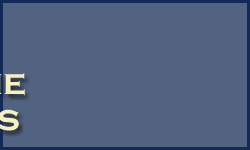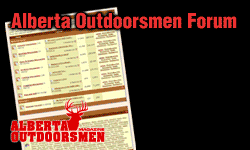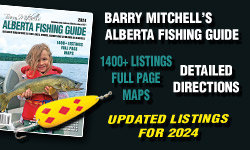Sportfishing Definitions
Bait – An attractant or organism (alive or dead), with scent or flavour intended to attract fish when attached to a hook or line used in angling. (See “Fishing with Bait”).
Bait Fish – See “Fishing with Bait Fish”.
Fizzing – Artificial swim bladder deflation. Involves puncturing the swim bladder through the musculature of the fish using a sharp object such as a hypodermic needle. As it causes undue harm to released fish and can increase the mortality of released fish, fizzing is illegal. The best practice is to not fish in deep water.
Gaff (gaff hook) – A device for landing or lifting fish, consisting of one or more sharpened hooks intended to stab the fish and attached to a handle. A gaff is illegal to possess while angling..
Hook – A single-, double- or triple-pointed hook on a common shaft, and includes hooks attached to a lure. (Note: some legal lures appear to have a hook with four points, but actually have two shafts each with two points, meaning that this lure has two hooks).
Legal Land Descriptions
Some waterbodies and landmarks are identified in this web site using the Alberta Survey System.
Legal land descriptions are written as follows:
(1 – 87 – 18 – W4) (Section – Township – Range – West of the 4th Meridian)
Limit – Refers to the maximum number of fish you are allowed to keep or have in your possession (see Catch Limits).
Lure – A spoon, plug, jig, fly or other such device made of feathers, fibre, rubber, wood, metal, plastic or similar materials that does not attract fish by scent or flavour.
Maggots – The larval stage of flies (terrestrial dipterous insects). Does not include earthworms (angleworms, nightcrawlers, dew-worms), mealworms or the larvae, pupae or adults of aquatic insects.
Mainstem – The mainstem of a river includes the mainstem river channel as well as any side channels, oxbows as well as riparian channels and plunge pools below spillways downstream of reservoirs unless otherwise specified.
Mealworms – The larval stage of beetles (terrestrial coleopterous insects). Does not include earthworms (angleworms, nightcrawlers, dew-worms), maggots, wax worms or the larvae, pupae or adults of aquatic insects.
Minimum-size limits – All fish caught that are shorter than the stated length must be immediately released.
Maximum-size limits – All fish caught that are longer than the stated length must be immediately released.
Harvest slot limits – All fish caught that are shorter or longer than the harvest slot limit must be immediately released.
Quality Stocked Fisheries – Stocked trout fisheries which are managed to provide anglers with the opportunity to catch and occasionally keep a memorable fish.
Regulation Dates – In this Guide, where dates are given with a regulation, the fishing season starts and ends on the dates listed. For example May 15 to Mar. 31.
Snagging – Attempting to catch a fish using a hook: a) other than to induce the fish to voluntarily take the hook in its mouth; or b) by intentionally piercing and hooking a fish in any part of the body other than the mouth.
Snagging Device
a) an instrument that is designed for the purpose of snagging fish;
or
b) hooks or lures that are altered to facilitate the snagging of fish.
Sportfishing – Angling (using hook and line), bowfishing or spearfishing, but also includes using a minnow trap, seine net or dip net to collect bait for personal use.
Sportfishing Seasons
● OPEN –sportfishing is allowed during the time period stated. During open seasons, sportfishing is permitted 24 hours a day unless stated differently for a specific waterbody.
● CLOSED – means all forms of sportfishing are prohibited.
Stream – Flowing water, and includes creeks, rivers and canals.
Tributary – Any stream that flows into a larger stream, or into a lake or reservoir. This includes a tributary to a tributary. Tributaries to a lake are considered to be tributaries to the outlet stream from the lake unless stated differently for a specific waterbody.
Watershed – An area drained by a stream or a series of streams and tributaries and includes any lakes and reservoirs whether or not they are directly connected to the stream.
Watershed Unit – Is a part of the larger Fish Management Zone and is the drained by the watershed described in text and illustrated on the map in the Guide. For example, NB1 is a subdivision of Northern Boreal
Watershed Boundaries – The boundaries between Watershed Units are illustrated on the maps in the Guide. These boundaries are differentiated by heights of land and the direction of flowing water.





